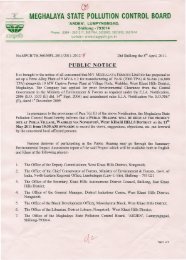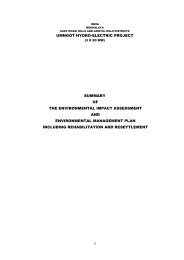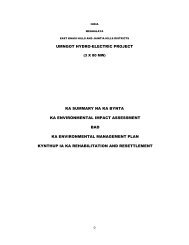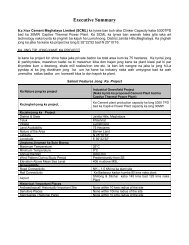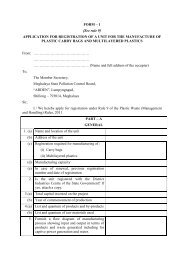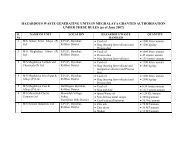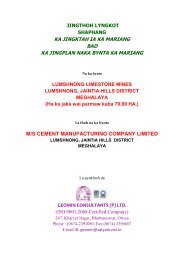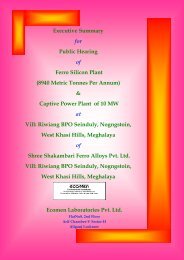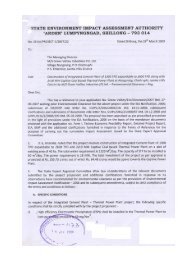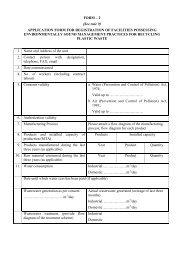chapter - 1 introduction - Meghalaya State Pollution Control Board
chapter - 1 introduction - Meghalaya State Pollution Control Board
chapter - 1 introduction - Meghalaya State Pollution Control Board
Create successful ePaper yourself
Turn your PDF publications into a flip-book with our unique Google optimized e-Paper software.
Hills Cement Co. Limited.<br />
5.3 MITIGATION OF DUST POLLUTION<br />
The sources and levels of emission before treatment and methods of dust<br />
extraction/suppression in different section of a cement plant are stated<br />
below:<br />
• Crushing<br />
Cyclone or bag filter is the type of dust collector mainly employed here to<br />
draw off the air-borne dust through hoods and ducts into a dust collector by<br />
means of a fan operating downstream of the collector, which provides the<br />
necessary suction to draw off the air stream.<br />
• Raw Mill<br />
Bag type filter is used with ball mills, whereas electrostatic precipitator (ESP)<br />
functions as dust collector in the case of roller mill. In some cases,<br />
cyclones/multiclones are used as a pre-collector in order to reduce the load<br />
on the final dust collectors like bag filter or ESP.<br />
• Kiln<br />
Kiln exhaust gases constitute the major source of particulate matter in any<br />
cement plant.<br />
Cement plants (more then 600TPD) use ESP's with gas conditioning towers.<br />
The current trend in almost all new plants is to use reverse air bag houses<br />
with woven fiberglass fabric. However, since such fabric can not be used over<br />
high gas temperature of 260° C, the gas is cooled either by atmospheric air<br />
dilution or by radiant cooler.<br />
The kiln (as well as cooler) ESP's are provided with electronic instruments<br />
called ESPMS (ESP Management System) and opacity meter at the chimney<br />
for constant monitoring of emission. EPMS continuously regulates the current<br />
and voltage of the ESP to keep the emission below the specified limits, on the<br />
basis of feedback signal from opacity meter. The combination of opacity<br />
meter and EPMS keeps the emission always below the specified limits with<br />
optimum power consumption.<br />
<strong>Pollution</strong> <strong>Control</strong> Consultants (India) Pvt. Ltd. 95



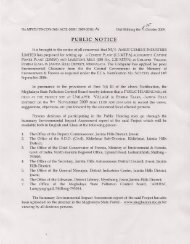
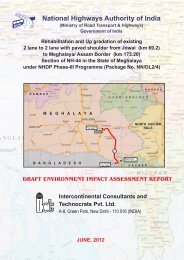

![[FORM I] - Meghalaya State Pollution Control Board](https://img.yumpu.com/49771786/1/190x245/form-i-meghalaya-state-pollution-control-board.jpg?quality=85)

